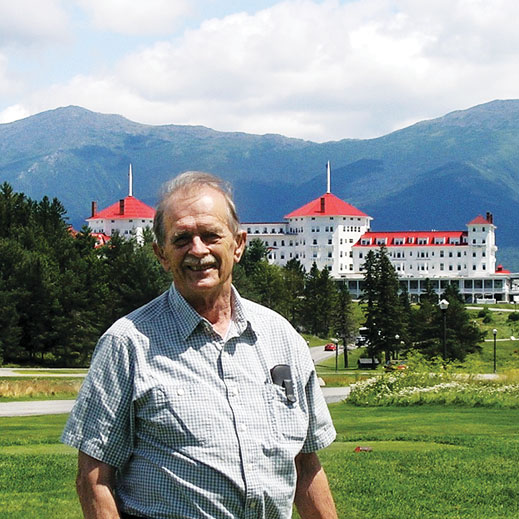Charles “Bob” Dauwalter ’55, SM ’71
Was Bob Dauwalter interested in aerospace work when he was a boy? “There wasn’t any ‘aerospace’ then,” he says, laughing. “I grew up in the DC-3 era!”

But he did have mechanical inclinations, buying a Ford V-8 engine to tinker with, and he discovered a lifelong love of bicycling by delivering newspapers in his hometown of Birmingham, Alabama.
At MIT Dauwalter declared Course II as his major and cultivated skills that he put to good use helping lead development of some of the most advanced mechanical devices of the late 20th century—gyroscopes, accelerometers, and other components of inertial guidance systems used in intercontinental missiles and submarine rescue vehicles.
After a postgraduation year at North American Aviation and a stint in the U.S. Army Ordnance Corps, Dauwalter returned to MIT and spent 37 years working at the Instrumentation Laboratory, through its transition to Draper Lab and its 1973 spinout as an independent R&D organization.
Along the way he earned an aero-astro master’s degree and served as editor and chief graphic artist for three editions of the American Institute of Aeronautics and Astronautics’ Aerospace Design Engineer’s Guide. He became an enthusiastic bicycle commuter, riding daily during warmer months to his Cambridge office from his Newton home for 25 years.
Much of Dauwalter’s work focused on the Polaris, Poseidon, and Trident submarine missiles, which had ranges up to 5,000 miles and stringent accuracy requirements.
“We made big mechanical devices, which still have a major role, even with silicon MEMS sensors becoming available,” he says. “The silicon stuff is small and inexpensive, but it will probably be a long time before it has comparable accuracy.”
That insight into MEMS (microelectromechanical systems) is firsthand. Dauwalter works daily with former Draper colleagues at Milli Sensor Systems & Actuators, developing silicon gyros and accelerometers. This has required him to become skilled with circuit simulation software, a challenge that called on his most important MIT lesson: “learning how to learn—that’s a powerful thing.”
Since 1958, Dauwalter has been a member of MIT’s Richard C. Maclaurin Masonic Lodge, named for the president who oversaw the Institute’s move to Cambridge. It has more than 100 members and is, he notes, “actively seeking more.” He and his wife, Hope, have a son and daughter, and they divide their time between Newton and New Hampshire’s Lake Winnipesaukee, where he is the homeowners’ association treasurer.
Keep Reading
Most Popular
Large language models can do jaw-dropping things. But nobody knows exactly why.
And that's a problem. Figuring it out is one of the biggest scientific puzzles of our time and a crucial step towards controlling more powerful future models.
The problem with plug-in hybrids? Their drivers.
Plug-in hybrids are often sold as a transition to EVs, but new data from Europe shows we’re still underestimating the emissions they produce.
Google DeepMind’s new generative model makes Super Mario–like games from scratch
Genie learns how to control games by watching hours and hours of video. It could help train next-gen robots too.
How scientists traced a mysterious covid case back to six toilets
When wastewater surveillance turns into a hunt for a single infected individual, the ethics get tricky.
Stay connected
Get the latest updates from
MIT Technology Review
Discover special offers, top stories, upcoming events, and more.